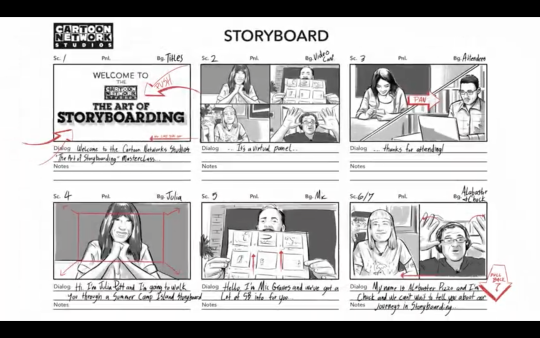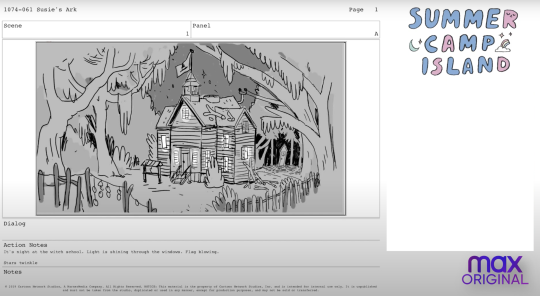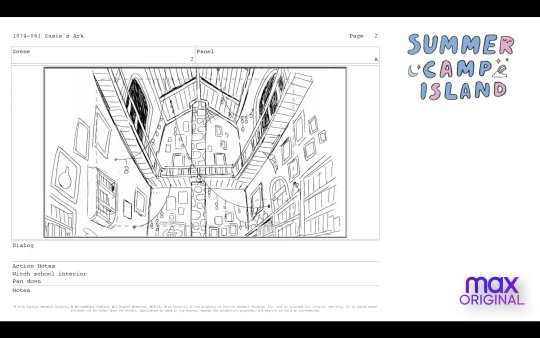11:00 AM – Noon (PDT) | Thursday 23 July 2020 (1:00pm – 2:00pm)
Panel Description: “In this masterclass virtual panel, hear from artists behind some of Cartoon Network Studios’ hit series as they share their journeys, learnings and top tips for aspiring storyboard artists worldwide. Join leading artists behind award-winning shows to learn how a concept or script is brought to life through the beloved art of storyboarding. Panelists include: Mic Graves, director of and voice on The Amazing World of Gumball; Chuck Klein, storyboard royalty and supervising producer/director, Apple & Onion; Julia Pott, creator of and voice on Summer Camp Island; Alabaster Pizzo, storyboard artist, Summer Camp Island. #ad” (Link to video: https://youtu.be/YlRT7lYIPXU)

Basically everything that comes after storyboarding becomes dependent on the storyboard artist. The story board will be reviewed by many people – the writers, directors, the storyboard artists, animators, ect. It is generally the first sketch of the series taking the story from text to image.
A good thing to remember is that while the storyboard might be considered a piece of art, it’s really a tool for the final animation. It should not be taken personally if directors or higher ups critique the work.
Almost everyone has started using Toon Boom Storyboard Pro. Lots also use post-it notes too. It’s fast, easy to move, and you don’t treat the image “preciously” in the sense that you probably won’t spend an excessive amount of time on the drawing.
Storyboarding for comedy? Tips: Simpler is better. You don’t need to create a lot of complicated camera angles or get showy. As long as you can see what is happening, and can focus on that (rather than rapid movement that might be distracting) the more the comedy has a chance to shine. Great model is the storyboarding for the Flintstones.
What makes a great storyboard? 1. Getting to know the characters well! Then you can add mannerisms into their scenes, you can write in jokes, add movement, etc. 2. Do the motion (to the extent that you can) for yourself and in front of a mirror. Make faces, and use those for the outline of character and don’t be afraid to exaggerate! 3. Read the script multiple times and then sketch out the work in its entirety as best you can (and don’t mind doing it again!! – remember that the work is in-progress and is or could change regularly and suddenly).
Storyboard pitch:


Cartoon Network tries to include their storyboarders into the art.
Paying Your Dues and/or Do’s and Do Not’s: Clean up after yourself. Be on time. Don’t just do the work–try to do more by aiming to bring the work to life! Save your work often.
Cartoon Network Studios has created a program that teaches storyboarding called CNS Academy. It is a 12-week, full-time, in-house storyboard trainee program designed to help train artists seeking to storyboard specifically for television. (Link: https://www.cartoonnetworkstudios.com/cnsacademy)
Advice: 1. Constantly work on personal projects. It’s great practice, builds your portfolio, and shows your passion for the industry. 2. Be a team player. If people like working with you then you will go far! 3. Get known–fill a portfolio of work and constantly put stuff out on social media and such. Building an audience will help with getting hired for more projects. 4. Absorb visual languages. Watch a lot of visual media (movies, animations, youtube videos, etc.) and practice communicating your ideas visually. The technical skill of drawing can be learned, but the soft skills like communication is something that everyone needs to practice regularly.
